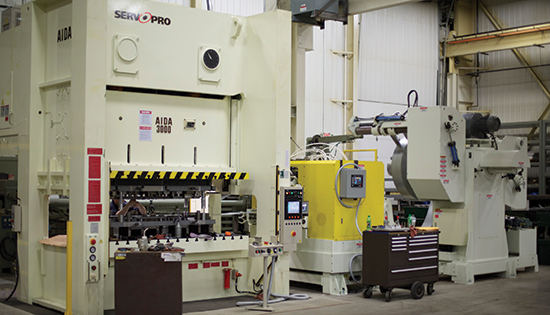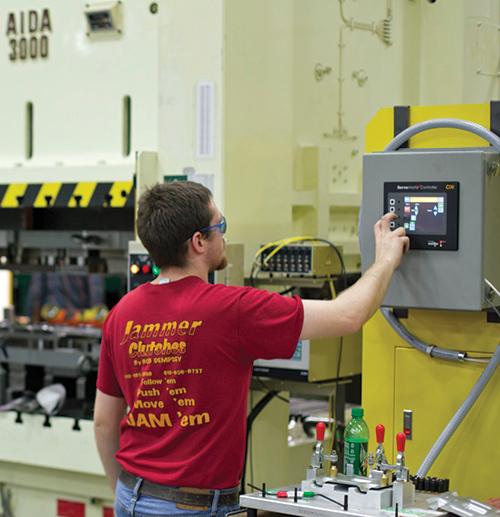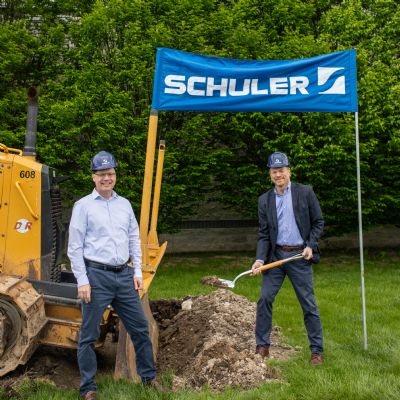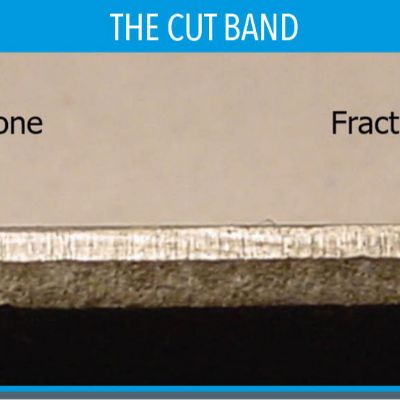Can Better Match Customer Conditions
“My goal is to use this press to simulate the press rates provided in customer quotes,” Pyper explains. “Theoretically, given enough information on the presses a customer will be running the tools in, we can simulate the actual curves of the press. So we can accurately simulate the customer’s stamping experience and, hopefully, provide a better-running tool. This also helps minimize final tryout time in the customer’s press.”
Speed-matching capability is important, as tooling may behave differently at varying press speeds.
“Difficult to simulate are the dynamics occurring when you speed up some of these dies,” Pyper offers. “We may tryout tooling at 15 strokes/ min., but when our customer pushes it to 50 or 70 strokes/ min., different things start happening in regard to part ejection and timing. You just can’t see dynamics of the tool until you speed up the press.”
The new servo press reaches speeds of 70 strokes/ min. during tryouts at Pyper Tool. That speed, along with a press bed that measures 3650 mm left to right by 1500 mm front to back, encompasses the majority of customer speed and tool-size parameters. Pyper Tool also has incorporated a full package on the press to test die sensing installed on many of the dies.
Automation Integration, Tool-Build Improvements
With time, Pyper expects the servo press to lend greater assistance in designing and building tooling to form and trim aluminum, in concert with current experiments with tool coatings to prevent galling. In addition, as the newly installed feedline ramps up, Pyper Tool will be able to further expand its tryout expertise.
“With our feed line installed, we are beginning to determine how we can marry automation with servo-press technology,” Pyper says, noting that Aida-America is providing training to help accelerate that knowledge. “Perhaps instead of running a mechanical press for the full stroke, we only have to open up a servo press high enough to advance the material feed. We also perform automated welding and other automated processes here, and feel that we can integrate some of that with the servo press. We’ll be able to perform resistance welding and other secondary operations in the servo press because we can stop the ram at any point. The servo press also offers functionality for spotting and for analyzing. We can move the ram very slowly. As we perform tryouts and set the function of the tool, servo technology can be a tremendous aid. Overall, we’re looking to marry our automation capabilities with our diemaking capabilities.”
As it is, the addition of servo-press technology into the tool design and build process keeps Pyper’s mind churning and promises an exciting future.
“There’s been a learning curve for us regarding servo-press capabilities, and there will continue to be,” he offers. “It will be an ongoing effort for us and the industry to push what can be done with a servo press. When designing tools specifically for a servo press, perhaps you can use less tooling to take advantage of draw rates similar to those of a hydraulic press, followed by the quick return of a servo press. We can also experiment with press speed when piercing and trimming. I can’t speak at length about that yet, but that is where Pyper Tool is heading.” MFView Glossary of Metalforming Terms
See also: Aida-America Corp.
Technologies: Coil and Sheet Handling, Stamping Presses











